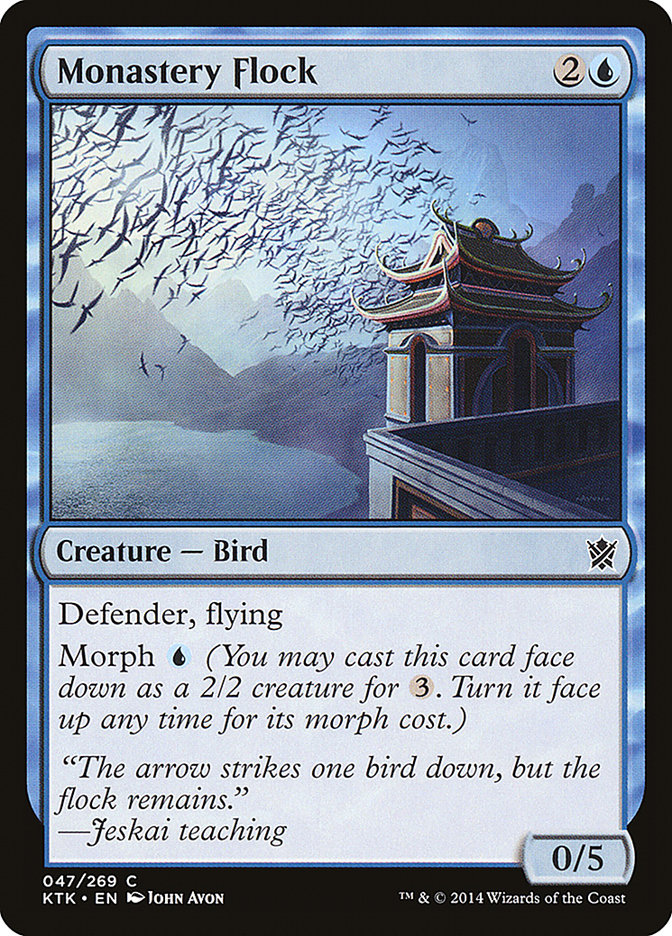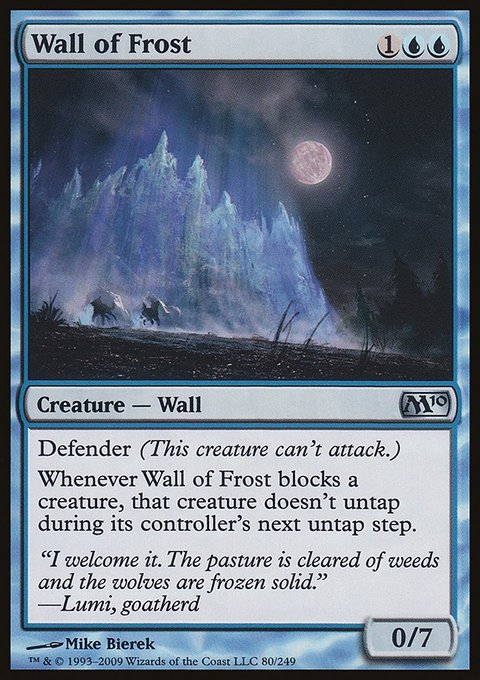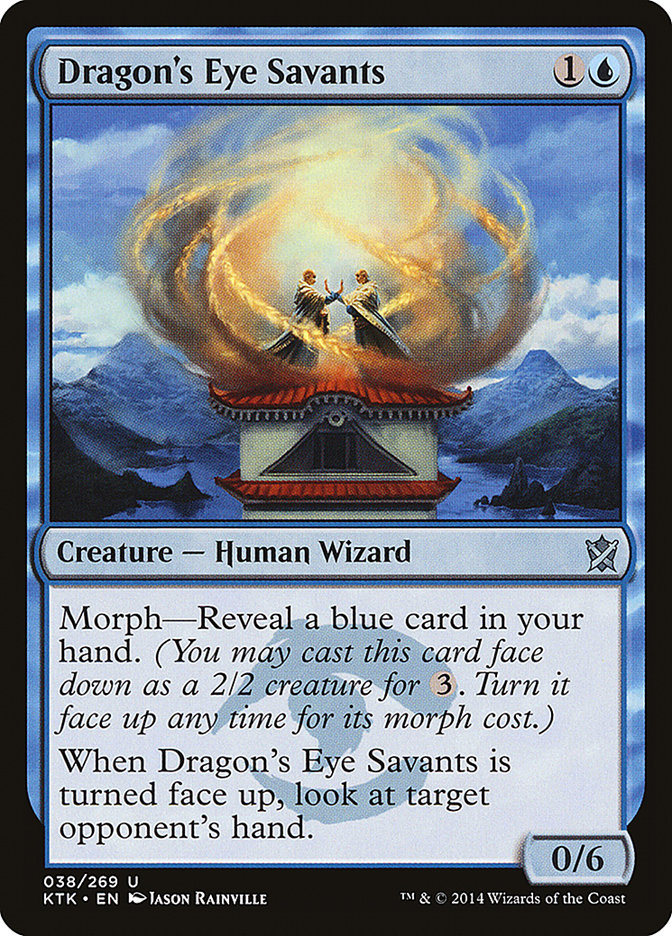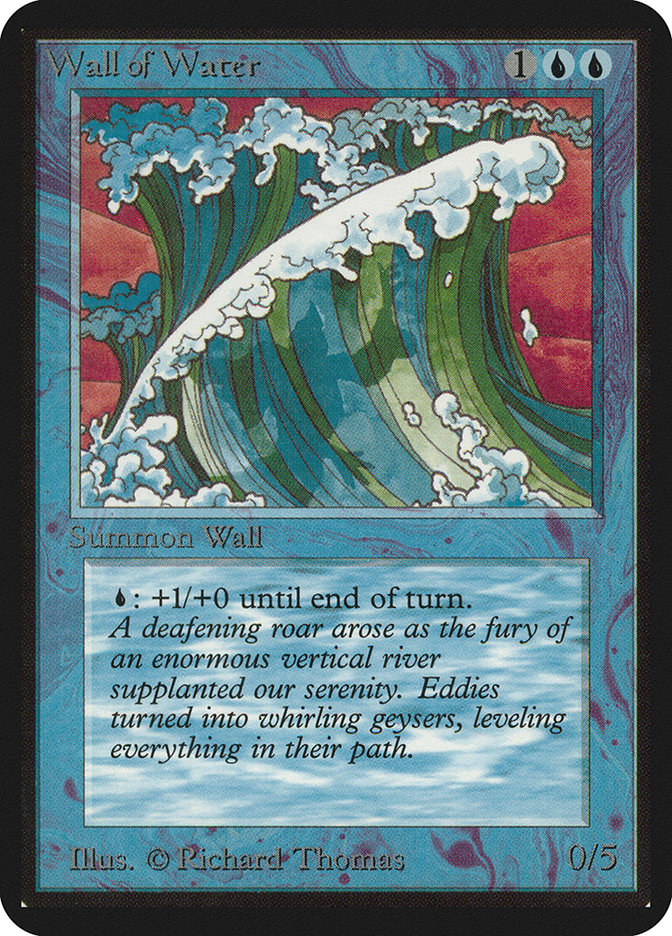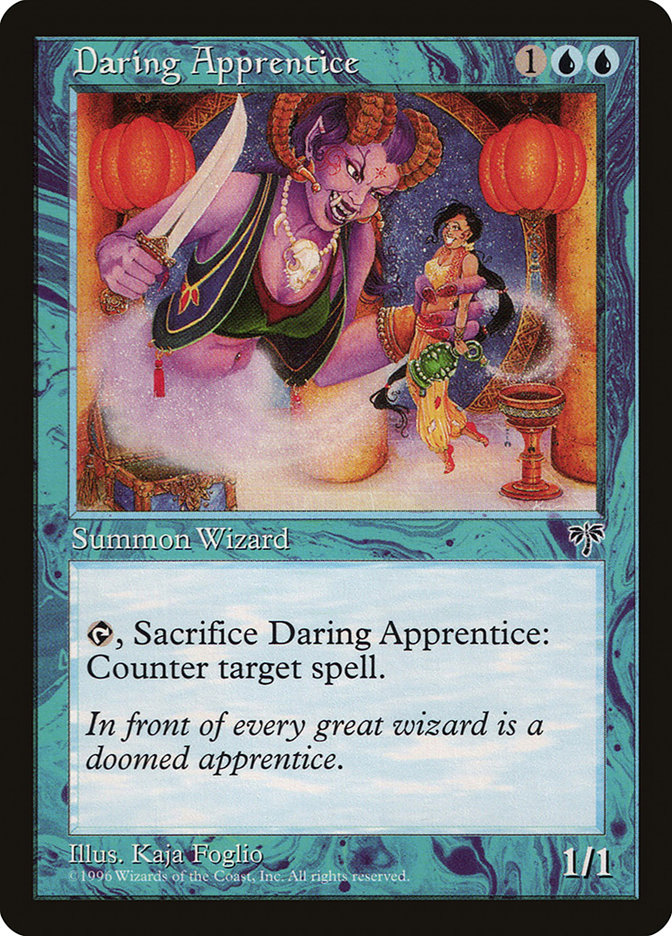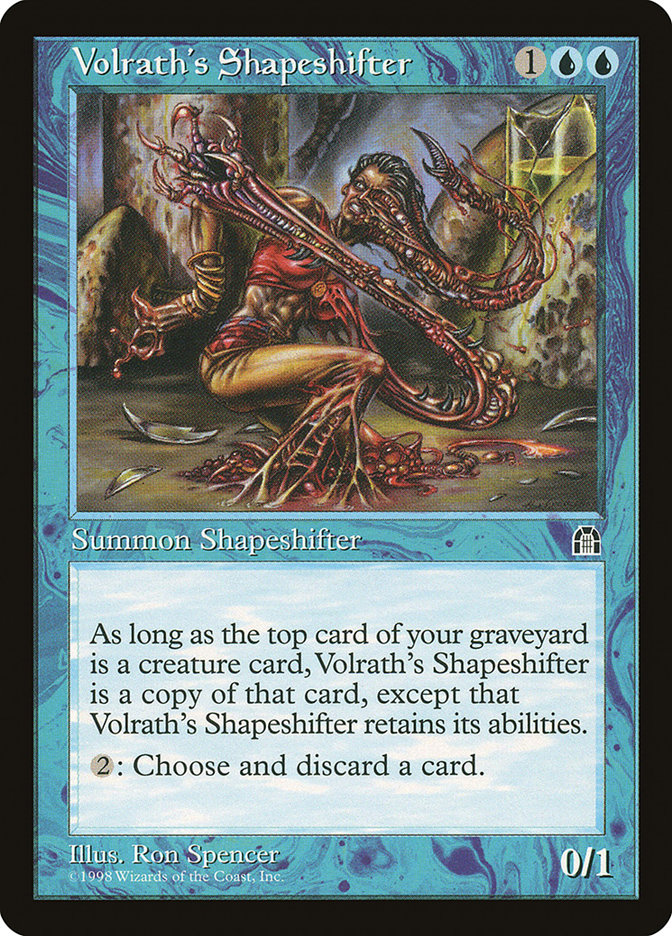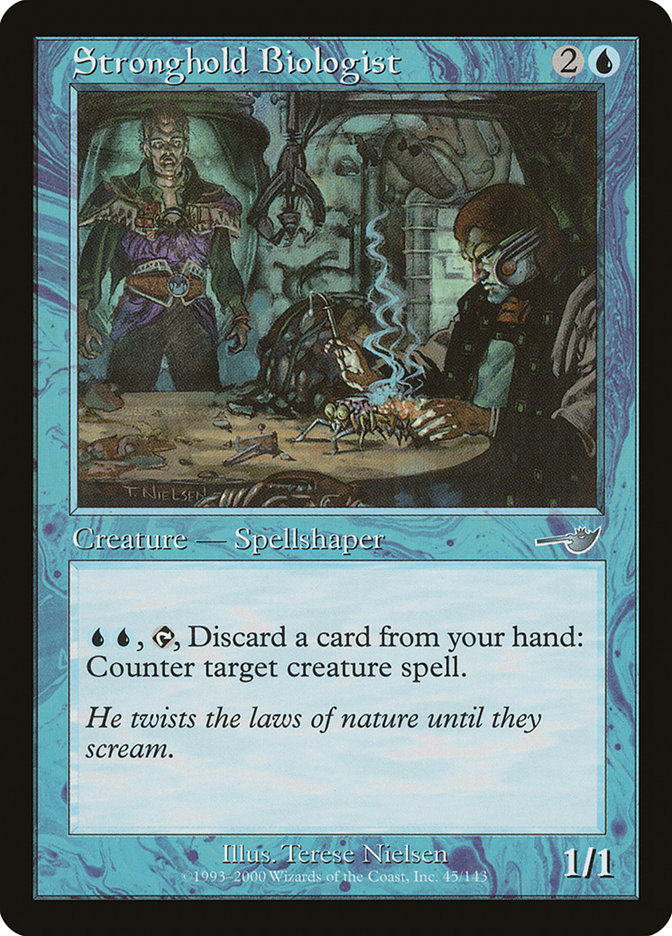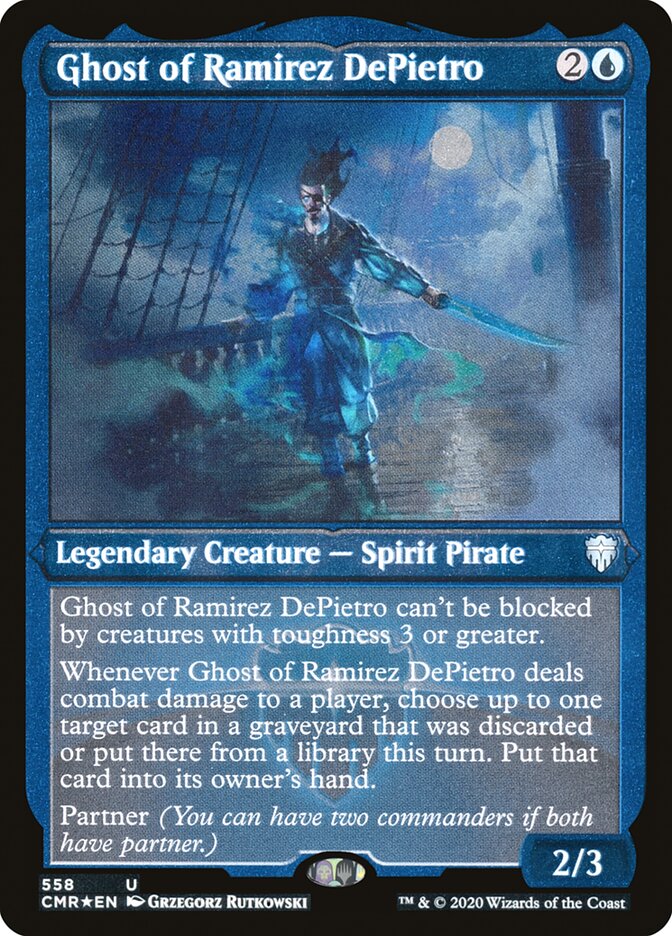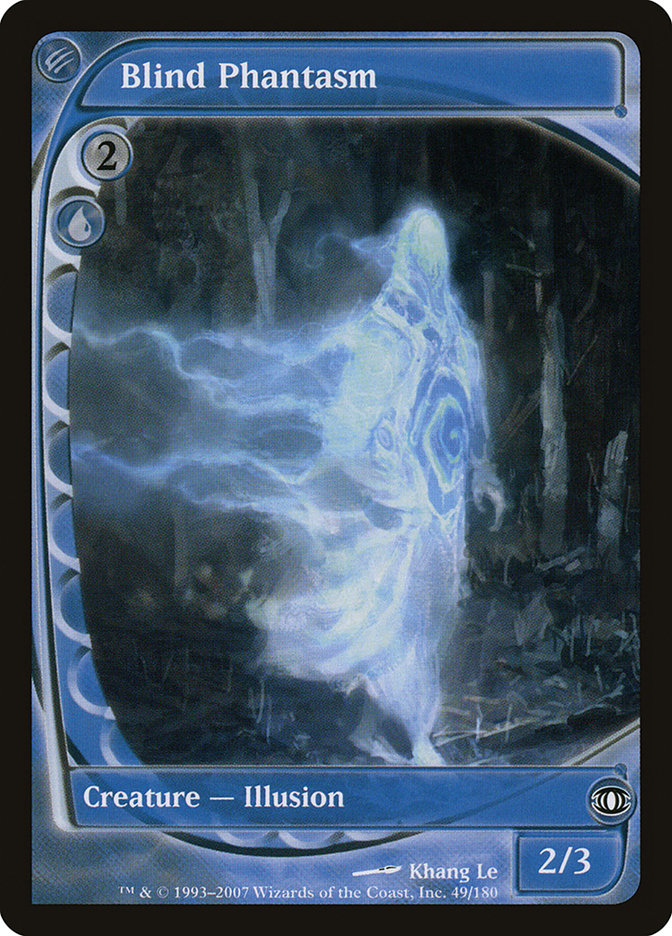Parvada del monasterio Carta MTG
| El coste de maná | |
| Costo de maná convertido | 3 |
| Rareza | Común |
| Tipo | Criatura — Ave |
| Habilidades | Defender,Flying,Morph |
| Liberado | 2014-09-26 |
| Coleccione símbolo | |
| Coleccione nombre | Khans of Tarkir |
| Coleccione código | KTK |
| Fuerza | 0 |
| Tenacidad | 5 |
| Número | 47 |
| Frame | 2015 |
| Disposición | Normal |
| Border | Negra |
| Ilustrado por | John Avon |
Texto de la carta
Defensor, vuela. Metamorfosis {U}. (Puedes lanzar esta carta boca abajo como una criatura 2/2 pagando {3}. Ponla boca arriba en cualquier momento pagando su coste de metamorfosis.)
"La flecha abate un ave, pero la bandada prevalece". —Enseñanza jeskai
Cartas Similares
Monastery Flock tiene su espacio único en Magic: The Gathering como una carta defensora multifacética. Su comparación más cercana podría ser con criaturas como Wall of Frost, que también ofrecen una fuerte presencia defensiva. Sin embargo, Monastery Flock tiene la ventaja de su habilidad de morph, permitiendo una transformación repentina que puede sorprender a los oponentes y bloquear posibles amenazas. Wall of Frost carece del elemento sorpresa pero compensa asegurando que las criaturas tapadas no se des-tapen durante el próximo paso de des-tapado.
Otra carta a considerar en este ámbito es Dragon’s Eye Savants. Al igual que Monastery Flock, esta carta también opera con un mecanismo de morph, inicialmente oculta como una criatura morphed de 2/2. Ambas cartas comparten la habilidad de ser jugadas boca abajo y volteadas en cualquier momento, añadiendo una profundidad no vista a la estrategia de juego. Sin embargo, Dragon’s Eye Savants provee un beneficio adicional al voltearse, revelando la mano del oponente, lo cual puede ser invaluable.
La comparación de estas cartas resalta la versatilidad de Monastery Flock, especialmente dentro de mazos que capitalizan en el elemento de secreto y defensa. La habilidad de cambiar de roles desde una carta inocua boca abajo a un posible bloqueador le otorga una ventaja táctica en muchos escenarios de juego, especialmente para aquellos que buscan mantener sus estrategias ocultas.
Cartas similares a Parvada del monasterio por color, tipo y coste de maná
Pros de la carta
Ventaja de cartas: La habilidad de metamorfosis de Monastery Flock te brinda un elemento sorpresa y puede llevar a intercambios ventajosos en el campo de batalla, proporcionando esencialmente ventaja de cartas, ya que tu oponente puede malgastar eliminadores en una amenaza menor.
Aceleración de recursos: Aunque no proporciona maná directamente, su bajo coste y habilidad de metamorfosis pueden servir como medida protectora, permitiendo una asignación más eficiente de recursos en las primeras fases del juego.
Velocidad instantánea: Aunque Monastery Flock en sí no es un instantáneo, su característica de metamorfosis puede activarse a velocidad instantánea, ofreciendo la flexibilidad de usar tu maná para reaccionar a los movimientos de tu oponente y potencialmente ahorrar turnos cruciales bloqueando criaturas voladoras cuando sea necesario.
Contras de la carta
Requisito de descarte: Monastery Flock te obliga a descartar una carta si deseas activar su habilidad de metamorfosis. Esto puede considerarse una desventaja significativa cuando tu mano ya está agotada o si te ves obligado a desechar prematuramente una pieza crucial de tu estrategia.
Coste específico de maná: El coste de lanzamiento de Monastery Flock es exclusivamente de maná azul, lo que puede no ser fácilmente desplegable en mazos multicolores que no priorizan las fuentes de maná azul. Esto limita la flexibilidad de la carta y puede obstaculizar tu curva de maná si el color no es un aspecto principal de la composición de tu mazo.
Coste de maná comparativamente alto: Para sus estadísticas base de 0/5, el coste de maná de Monastery Flock puede parecer desproporcionado en comparación con otras criaturas en el formato. Cuando te enfrentas a mazos agresivos, su utilidad puede no justificar el coste cuando se necesitan jugadas más rápidas y impactantes para mantener una postura competitiva.
Razones para incluir en tu colección
Versatilidad: La habilidad de metamorfosis de Monastery Flock le permite adaptarse a diversas situaciones de juego. Puede ser un bloqueador sorpresa, metamorfoseado cuando necesitas protegerte, o volteado para ser un bloqueador decente contra amenazas aéreas.
Potencial de combo: Esta carta funciona bien con estrategias que giran en torno a mecánicas de metamorfosis y desmetamorfosis. Sus sinergias con cartas que se activan al voltear las criaturas pueden cambiar el juego, ofreciendo no solo defensa sino también oportunidades de combo.
Relevancia en el meta: En un meta donde las criaturas voladoras son dominantes, Monastery Flock puede ser una carta lateral valiosa. Su capacidad de transformarse en un volador 0/5 otorga a cualquier mazo una ventaja defensiva contra amenazas voladoras populares.
Cómo vencer
Monastery Flock presenta un desafío único en el campo de batalla como una carta en Magic: The Gathering. Esta criatura destaca por su habilidad de metamorfosis, que le permite ser jugada boca abajo como una criatura 2/2 por tres maná genéricos, para luego ser volteada en cualquier momento por su coste de metamorfosis—esquivando hechizos dirigidos y confundiendo la estrategia de tu oponente. Además, como un fuerte bloqueador con una defensa de cinco, puede bloquear efectivamente muchas amenazas.
Para vencer a Monastery Flock, los jugadores deberían considerar cambiar a hechizos de eliminación que no requieran apuntar a una sola criatura, como limpiezas de tablero o hechizos que infligen daño a todas las criaturas. Alternativamente, emplear voladores o criaturas con atropellamiento puede superar la formidable defensa de Monastery Flock. Utilizar trucos de combate que aumenten el poder de tu criatura o usar hechizos que puedan evitar el combate de criaturas por completo, como hechizos de daño directo al oponente, también puede funcionar como solución. En conclusión, aunque Monastery Flock puede ser un obstáculo sorprendente para los jugadores de MTG, existen diversas estrategias para navegar alrededor de sus defensas y asegurar la victoria en el campo de batalla.
Donde comprar
Si estás buscando comprar una carta MTG Parvada del monasterio de un coleccione específico como Khans of Tarkir, existen varias opciones confiables que debes considerar. Una de las fuentes principales es tu tienda de juegos local, donde a menudo puedes encontrar paquetes de refuerzo, cartas individuales y mazos preconstruidos de colecciones actuales y pasadas. A menudo ofrecen el beneficio adicional de una comunidad donde puedes intercambiar con otros jugadores.
Para un inventario más amplio, particularmente de colecciones más antiguos, mercados en línea como TCGPlayer, Card Kingdom y Card Market ofrecen amplias selecciones y te permiten buscar cartas de colecciones específicos. Las plataformas de comercio electrónico más grandes como eBay y Amazon también tienen listados de varios vendedores, lo que puede ser un buen lugar para buscar productos sellados y hallazgos raros.
Además, el sitio oficial de Magic suele tener un localizador de tiendas y listas de minoristas para encontrar Wizards of the Productos con licencia costera. Recuerde comprobar la autenticidad y el estado de las cartas al comprarlas, especialmente a vendedores individuales en mercados más grandes.
A continuación se muestra una lista de algunos sitios web de tiendas donde puede comprar las Parvada del monasterio y otras cartas MTG:
 COMPRAR
COMPRAR BurnMana es un socio oficial de TCGPlayer
- eBay
- Card Kingdom
- Card Market
- Star City Games
- CoolStuffInc
- MTG Mint Card
- Hareruya
- Troll and Toad
- ABU Games
- Card Hoarder Magic Online
- MTGO Traders Magic Online
Ver productos MTG
Legalidades
Formatos de Magic the Gathering donde Parvada del monasterio tiene restricciones
| Formato | Legalidad |
|---|---|
| Historicbrawl | Legal |
| Historic | Legal |
| Legacy | Legal |
| Paupercommander | Legal |
| Oathbreaker | Legal |
| Gladiator | Legal |
| Pioneer | Legal |
| Commander | Legal |
| Modern | Legal |
| Pauper | Legal |
| Vintage | Legal |
| Duel | Legal |
| Explorer | Legal |
| Penny | Legal |
| Timeless | Legal |
Reglas e información
La guía de referencia para las reglas de las cartas Parvada del monasterio de Magic: The Gathering proporciona las reglas oficiales, las erratas emitidas, así como un registro de todas las modificaciones funcionales que se han producido.
| Fecha | Texto |
|---|---|
| 20/09/2014 | Un permanente que se voltea boca arriba o boca abajo cambia sus características pero por lo demás sigue siendo el mismo permanente. Los hechizos y habilidades que estaban apuntando a ese permanente, así como las Auras y Equipamientos que estaban adjuntos al permanente, no se ven afectados. |
| 20/09/2014 | Cada vez que tengas prioridad, puedes girar boca arriba la criatura boca abajo revelando cuál es su coste de metamorfosis y pagando ese coste. Esta es una acción especial. No utiliza la pila y no se puede responder a ella. Solo un permanente boca abajo puede ser volterado de esta manera; un hechizo boca abajo no puede. |
| 20/09/2014 | En cualquier momento, puedes mirar una carta boca abajo o un permanente que controles. No puedes mirar cartas boca abajo o permanentes que no controles a menos que un efecto te instruya hacerlo. |
| 20/09/2014 | Debido a que el permanente está en el campo de batalla tanto antes como después de ser volteado boca arriba, voltear un permanente boca arriba no hace que se activen las habilidades de entra al campo de batalla. |
| 20/09/2014 | Si un permanente boca abajo abandona el campo de batalla, debes revelarlo. También debes revelar todas las cartas boca abajo y permanentes que controlas si abandonas el juego o si el juego termina. |
| 20/09/2014 | Si una Monastery Flock boca abajo que está atacando es volteada boca arriba, seguirá atacando a pesar de que tendrá la habilidad de defender. Si es volteada boca arriba antes de que se declaren bloqueadores, entonces las criaturas sin volar o alcance no podrán bloquearla. |
| 20/09/2014 | Morph te permite jugar una carta boca abajo pagando , y te permite girar el permanente boca abajo hacia arriba en cualquier momento que tengas prioridad pagando su coste de morph. |
| 20/09/2014 | El hechizo boca abajo no tiene coste de mana y tiene un coste de mana convertido de 0. Cuando lanzas un hechizo boca abajo, colócalo en la pila boca abajo para que ningún otro jugador sepa qué es, y paga . Este es un coste alternativo. |
| 20/09/2014 | Cuando la carta se resuelve, entra al campo de batalla como una criatura 2/2 sin nombre, costo de mana, tipos de criatura o habilidades. Es incolora y tiene un costo de mana convertido de 0. Otros efectos que se apliquen a la criatura todavía pueden otorgarle cualquiera de estas características. |
| 20/09/2014 | Debes asegurarte de que tus hechizos boca abajo y permanentes puedan diferenciarse fácilmente entre sí. No se te permite mezclar las cartas que los representan en el campo de batalla para confundir a otros jugadores. La secuencia en la que entraron al campo de batalla debe permanecer clara. Métodos comunes para hacerlo incluyen usar marcadores o dados, o simplemente colocarlos en orden en el campo de batalla. |
